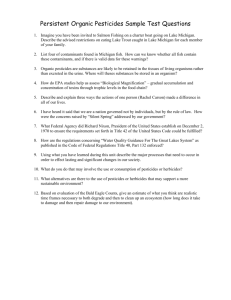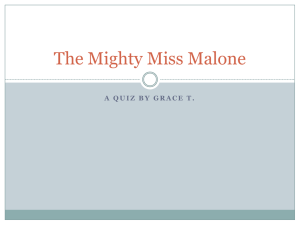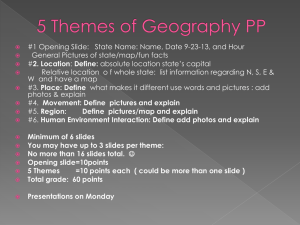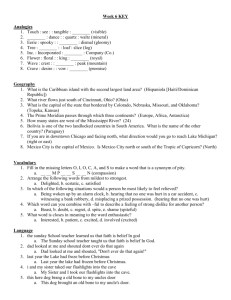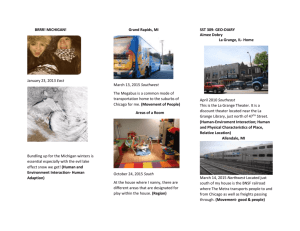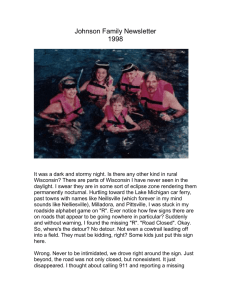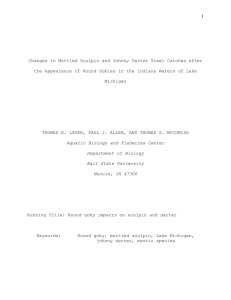Great Lakes Regional Research Information Network —Lake Michigan
advertisement
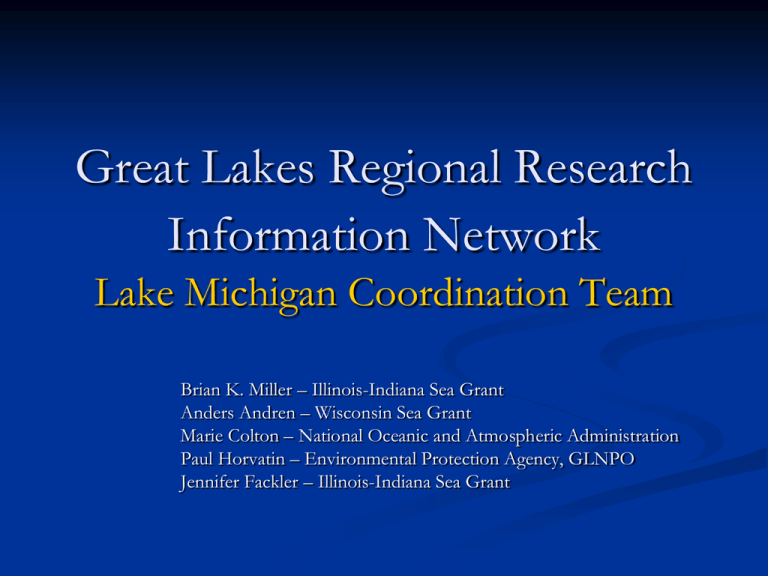
Great Lakes Regional Research Information Network Lake Michigan Coordination Team Brian K. Miller – Illinois-Indiana Sea Grant Anders Andren – Wisconsin Sea Grant Marie Colton – National Oceanic and Atmospheric Administration Paul Horvatin – Environmental Protection Agency, GLNPO Jennifer Fackler – Illinois-Indiana Sea Grant Task 1: Establish a regional coordination group to oversee the planning and implementation of the research and information strategy. Anders Andren - Wisconsin Sea Grant (academic) Marie Colton- National Oceanic and Atmospheric Administration (NOAA) (agency) Paul Horvatin – Environmental Protection Agency (EPA) (agency) Brian Miller - Illinois-Indiana Sea Grant (academic) Task 2: Conduct a bottom-up needs assessment with broad user and stakeholder input. Web site searches revealed 294 organizations with a strong interest in Lake Michigan. 45 had stated priorities/goals. All 294 were contacted to review priorities/goals or to add some – 3 sent revisions, 7 new organizations sent priorities. Priorities and Goals 52 organizations provided 379 priorities or needs Priorities reported per organization ranged 1–40. Priorities provided by organizations represented general topic areas and, in some cases, specific objectives. Many of the priorities listed by organizations were not research oriented, but more outreach based or policy/management. If an organization listed partner institutions, these partners were also added to the list and queried for priorities. Task 3: Identify research and information gaps. The 379 priorities aggregated into 74 categories. These categories were sorted based on the number of organizations focusing on a specific priority category. The most frequently listed priorities fell into five categories The top five categories contained 154 priorities. These priorities were closely examined and broken down into subcategories of specific topic areas under which agencies and academic institutions conduct research, education, and extension programs. These topic areas were prioritized by the number of organizational priorities occurring under each topic. 14 top topic (subcategory) areas emerged. 5 Major Categories & Associated Topic Areas Category % Org. N=52 Topics/Subcategories – N (154 total priorities in 5 cat.) % of priorities in category (N) Ecosystem 36.5 Protection/Restoration - 13 Management/Stewardship - 5 78.3 (23) Pollutants 34.6 Non-point Sources - 7 Atmosphere - 6 Toxics – 5 40.0 (45) Education 30.8 Miscellaneous - 7 Appreciation - 4 Stewardship - 3 Students - 3 68.0 (25) AIS 26.9 Prevention - 13 Control - 8 55.3 (38) Water 25.0 Quality - 7 Quantity - 6 Use - 5 78.3 (23) Focus turned to identifying high priority research needed in 5 Categories Problems encountered by management agencies Monitoring and indicator trends Researcher and institutional direction Top priority issue selected Changing Food Webs and Influence Aquatic Invasive Species have on these changes Addresses priorities in all 5 categories Task 4: Develop a research and information plan for the region that prioritizes actions according to management-critical needs. The Lake Michigan team conducted a workshop on June 3-4, 2008 which brought together Lake Michigan scientists and funding agency officials to determine critical research questions, time and space scales, and data gaps to be addressed in the 2010 field season. Agencies funding research on Lake Michigan then met regularly in the summer and fall of 2008 to identify research questions and data needs that are most appropriate for each agency's upcoming RFP and/or field season. Management Model Research gaps not covered by agencies were identified 1. 2. The Illinois-Indiana Sea Grant and Wisconsin Sea Grant programs joined together to issue a joint RFP focused on: Bioenergetics, trophic status, and food web relationships of non-commercial and nonrecreational fish species Current status and trends of nutrient inputs to Lake Michigan with an emphasis on large rain events and processes at the land-water interface Proposals Selected Constructing the Nearshore Lake Michigan Food Web Using Multiple Trophic Indicators S.Czesny, T. Hook, G. Bowen, and J. Rinchard (IL-IN) H. Bootsma, J. Janssen (Wisc.) Conclusions To address problems in these topic areas, specific research projects will be dynamic and change frequently as new discoveries are made and new problems arise. Frequent coordination among the agencies and institutions sponsoring and conducting research is needed to prioritize specific research questions and distribute agency attention and resources to these questions as conditions change. Task 6: Provide an ongoing platform for coordination, collaboration, and resource sharing among participants. The Lake Michigan coordination team will continue to meet regularly to coordinate data collection, model development and better integration of water quality and fish management processes. one-day workshop every two years to bring together Lake Michigan scientists and funding agency officials. The results of each workshop will inform upcoming funding cycle and/or field season.
